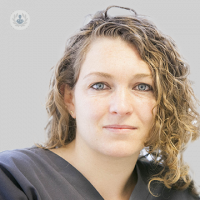How I can maintain good oral health?
Written by:
What is periodontics?
Periodontics is a part of dentistry that is related to the diagnosis and treatment of diseases that support teeth or implants, as well as maintaining their health, function and aesthetics.
What are the most common diseases?
Periodontal disease is a bacterial infection that affects the periodontium, or tissues supporting the teeth.
When the gingiva is affected causing a reversible inflammatory gingivitis process is called. Gingivitis is an inflammation of the gingiva, its main feature is the bleeding caused by the remnants of food left between teeth by poor hygiene or no. When this phenomenon evolves into a chronic state may lead to periodontitis.
Periodontitis produces a deeper destruction of the tissues supporting the teeth, in addition to the gum can affect the bone, cementum and periodontal ligament.
What are the consequences?
Gingivitis without proper treatment can progress to periodontal disease. Periodontal disease causes loss of tissue clamping tooth which causes mobility and eventually to loss with aesthetic and functional consequences that this entails.
Other symptoms is the constant bad breath, pain when chewing or tooth sensitivity.
How can we maintain a healthy mouth?
Measures to prevent gingivitis and periodontal disease will be aimed at removing plaque or tartar that is the main causative agent.
The most effective way is the correct use of the toothbrush and flossing at least once a day that helps us reduce plaque in the interdental areas where the toothbrush can not reach.
The devices that supply water hygiene can supplement, but not remove plaque that if they eliminate food residues favoring the formation of this.
The use of certain pastes or mouthwashes can help us to control plaque bacteria.
In addition to hygiene are other risk factors that influence the onset of periodontal disease such as smoking, hormonal changes, diabetes, stress, medications that can reduce saliva (antidepressants ...), some diseases (cancer, AIDS ...) or even genetic, because more people prone to suffer periodontal disease.
Controlling these risk factors will also be essential for good control of periodontal disease.
Another important pillar is to conduct periodic reviews to the dentist, which will help us monitor the health of our gums and if necessary put in place proper treatment to control gingivitis or periodontal disease.
How do they influence food to maintain a healthy mouth?
Periodontal disease is closely related to diet, because there are dietary elements that promote or diminish their development.
Over time periodontal disease has undergone variations associated with changes in diet consistency, periodontal varied frequency and severity.
Although a diet has a high nutritional content if no proper consistency is unable to stimulate the periodontal tissues or sweep the remains and associated bacteria to teeth. A consistent diet helps increase keratinization of the gingiva.
Minerals, especially calcium, magnesium, phosphorus and fluorine and vitamins are very important, optimal concentrations offer greater protection against caries and periodontal disease.
Fermentable carbohydrates are used by microorganisms that contribute to oral flora for metabolism, thus contributing to the formation of plaque, which when not properly removed can cause inflammation of the gums.
What is periodontal treatment?
The goal of treatment is to control the infection, the number and type of treatment will vary depending on the severity of the disease.
Prophylaxis remove tartar and plaque, after a thorough cleaning will instruct the patient on proper hygiene, flossing and can recommend the use of mouthwashes, and the placement of misaligned teeth, smoking cessation or treatment of other diseases that influence the onset of periodontal disease.
Scaling and root planing is a deep prophylaxis, with scraping tartar deposited both above and below the gum line is removed, and smoothing the roughness which can accumulate germs are eliminated.
Surgical treatment, depending on the severity of the disease may recommend surgical treatment, when after a thorough cleaning inflammation persists and bags. This treatment involves lifting the gums to remove tartar from the tooth root which is not otherwise accessible and replace the gum.
In addition to surgery using bone grafts to help replace the tissue destroyed by disease may be necessary.


